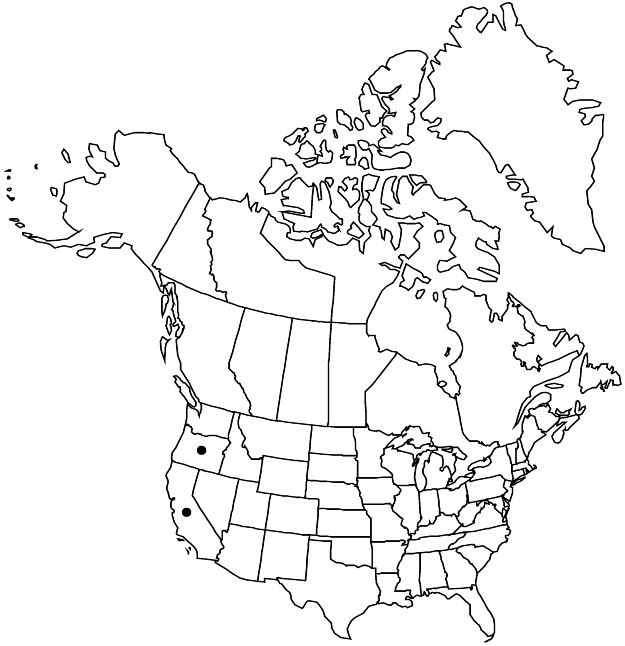Rubus glaucifolius
Proc. Calif. Acad. Sci. 1(ed. 2): 70. 1873.
Shrubs, to 3 dm, weakly armed. Stems biennial, creeping, glabrous, eglandular, strongly pruinose; prickles sparse, erect or slightly curved, weak, slender, 2–3 mm, narrow-based. Leaves deciduous, ternate; stipules filiform to linear, 3–10 mm; terminal leaflets ovate to elliptic, 4–8 × 3–7 cm, base tapered or subcordate, often 2-lobed, margins coarsely dentate, apex acute to rounded, abaxial surfaces unarmed, densely white-tomentose, eglandular. Inflorescences terminal and axillary, (1–)2–4(–10)-flowered, cymiform. Pedicels unarmed, finely hairy, stipitate-glandular. Flowers bisexual; petals white, oblong to oblanceolate, 4–8 mm; filaments laminar; ovaries white-tomentose. Fruits reddish purple, hemispheric to conic, 0.4–1 cm diam.; drupelets 10–40, coherent, separating from torus.
Phenology: Flowering Apr–Jul.
Habitat: Semiopen montane forests
Elevation: 800–2100 m
Discussion
Rubus glaucifolius is found in the Sierra Nevada and Klamath mountains as well as the Peninsular and northern Coastal ranges in California, and in adjacent Oregon only in Jackson County.
Selected References
None.
